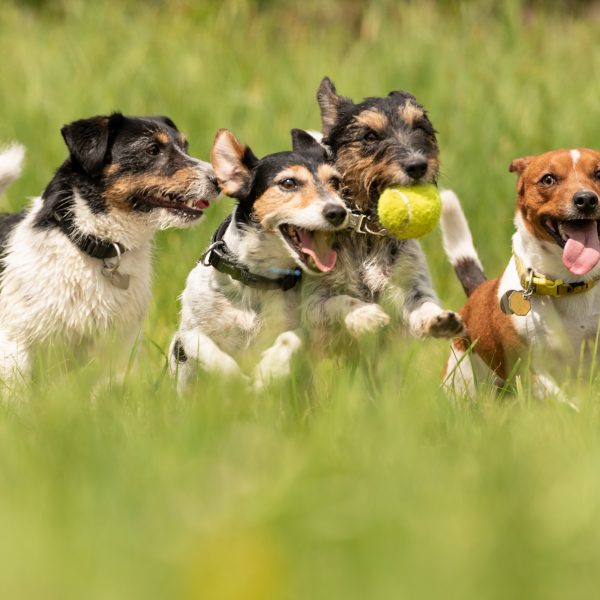5 Tips for Exercising With Your Dog

Making sure your dog gets enough exercise keeps them from getting bored, helps them stay healthy, and also often keeps them out of trouble. As the saying goes, a tired dog is a happy dog. Although exercise is important, you also need to make sure you’re not overdoing it or risking injury to yourself or your dog. Here are a few tips for exercising with your dog:
1. Start With a Visit to the Vet
If you’re planning to do anything other than a standard walk, it’s a good idea to visit your veterinarian before you and your dog jump in. This is particularly important if you’re planning to start an exercise program or training program like training for dog sports.
Even if you’re just doing something more intense for the first time, like hiking or playing frisbee, you want to make sure your dog is cleared for that activity. By visiting the vet beforehand, they can check over your dog and make sure that whatever you’re doing will not harm or injure them.
2. Go Slow at First
Whether you are starting something completely new or picking up an activity again after a slower winter or a break, take things slowly at first. You want to ease into any new activity so you can see how your dog responds to it and make sure you’re not doing too much too fast.
This is also important if you have a brachycephalic dog. These snub-nosed dogs are sensitive to heat, can overexert themselves easily, and can’t cool themselves down as well when panting as dogs with longer muzzles. There are many safe ways to exercise flat-faced dogs and starting out slow is a good idea with these dogs, especially for new activities.
Going slow at first is also a good idea when starting up activities after a break or a slow winter. Many dogs and people aren’t as active during the winter months. So, when you start jumping back into things as the weather warms up, you and your dog often need to rebuild some stamina and endurance. This is why easing back into heavy exercise after the winter is one of the elements included in any spring dog safety guide.
3. Keep Things Low-Impact for Puppies
Another one of the tips for exercising with your dog is to keep things low-impact for puppies. Too much exercise when a puppy is still growing, especially things that are high-impact, can be damaging to their developing bones and joints. This is important for all dog breeds, and especially important for large and giant dog breeds.
Puppies finish growing at different rates. Large and giant dog breeds tend to take a little bit longer to finish developing than smaller dog breeds. Because there is some variation, it’s a good idea to keep up with regular vet visits. Based on your dog’s individual progress, your vet can help you determine when it’s safe to do more things and to tackle higher-impact exercises.
They can also give you some guidelines for any activities you should try to avoid depending on your dog. For example, giant dog breeds do not tend to be a good fit for running partners due to their size and the joint damage it can cause them over time.
Because their bodies are longer than their legs, which makes them prone to back issues, Dachshunds should avoid jumping a lot, especially down onto hard surfaces. If your dog has any specific considerations like this, your vet can let you know and give you some alternative activities to try.
4. Bring Plenty of Water
When you plan to do any activity with your dog, it’s a good idea to bring plenty of water with you for both you and your dog. Bringing a collapsible water bowl with you can make it much easier to give your dog water and also helps you avoid wasting it.
You can’t always guarantee that water will be available and staying hydrated is important for you both. Plus, you don’t want to let your dog drink out of unidentified water sources, especially if it is standing water or has nearby drainage.
Bringing your own water and a collapsible bowl ensures you have clean water when you need it and you also don’t have to worry about whether there will be water bowls available or whether your dog should drink out of shared water bowls.
5. Check in With Yourself and Your Dog
Overexertion and heat exhaustion can be dangerous for both you and your dog. Because dogs are more sensitive to heat, they can develop heat exhaustion and heat stroke faster than humans. When exercising with your dog, it’s important to pay attention to your dog and to check in periodically with yourself and with your dog to make sure you’re both doing well.
If your dog seems to be getting tired, take a break, rehydrate, and evaluate whether you should keep going or wrap up and go home. These check-ins are a great idea for any activity you do with your dog, especially if you’re doing it in warmer weather when your dog is prone to overheating faster.
These are just a few tips for exercising with your dog. Keeping these in mind can help keep you both stay safe while being active and having fun.
